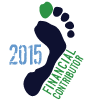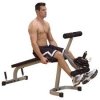I gave up running 10 years ago after suffering shin splints that wouldn't heal. Recently I read Born to Run and thought I would give it another go.
I watched a few barefoot form videos on YouTube and elsewhere then headed over to the gym. I started slow on the treadmill, running in nothing but socks. I ran a mere half-mile my first time running barefoot (or minimalist, as it were). The next day, the one thing I noticed was that I had a LOT of muscle pain (calves, specifically) but NO joint pain. I was impressed. This was about 7 months ago, maybe a little longer.
I kept at it, working my way up to 4 miles at a cadence of 168. For me, this is ~9:40/mile. Then I made the unwise decision to introduce an a small incline into my run. That led to bursitis in my right ankle.
I took one month off and now I'm back. I still run exclusively indoors. And because I got yelled at for being "unhygienic" at the gym, I ditched the socks and went with Five Fingers.
I feel great. My only issue is that I run 4 miles and barely break a sweat. I stop running not because I'm tired but because I need to allot time for life's other responsibilities.
Would I risk injury by increasing my pace? Any insights from other new folks would be appreciated. How do I transition to the outdoors? The reason I run on a treadmill is because I know I'm guaranteed a flat surface. If I run outdoors, I'll have to follow the terrain in Baltimore city and I know that involves hill, however minor they may be. I don't want to get hurt again. If it makes any difference, I'm in my late 30's.
Thanks in advance.
I watched a few barefoot form videos on YouTube and elsewhere then headed over to the gym. I started slow on the treadmill, running in nothing but socks. I ran a mere half-mile my first time running barefoot (or minimalist, as it were). The next day, the one thing I noticed was that I had a LOT of muscle pain (calves, specifically) but NO joint pain. I was impressed. This was about 7 months ago, maybe a little longer.
I kept at it, working my way up to 4 miles at a cadence of 168. For me, this is ~9:40/mile. Then I made the unwise decision to introduce an a small incline into my run. That led to bursitis in my right ankle.
I took one month off and now I'm back. I still run exclusively indoors. And because I got yelled at for being "unhygienic" at the gym, I ditched the socks and went with Five Fingers.
I feel great. My only issue is that I run 4 miles and barely break a sweat. I stop running not because I'm tired but because I need to allot time for life's other responsibilities.
Would I risk injury by increasing my pace? Any insights from other new folks would be appreciated. How do I transition to the outdoors? The reason I run on a treadmill is because I know I'm guaranteed a flat surface. If I run outdoors, I'll have to follow the terrain in Baltimore city and I know that involves hill, however minor they may be. I don't want to get hurt again. If it makes any difference, I'm in my late 30's.
Thanks in advance.












